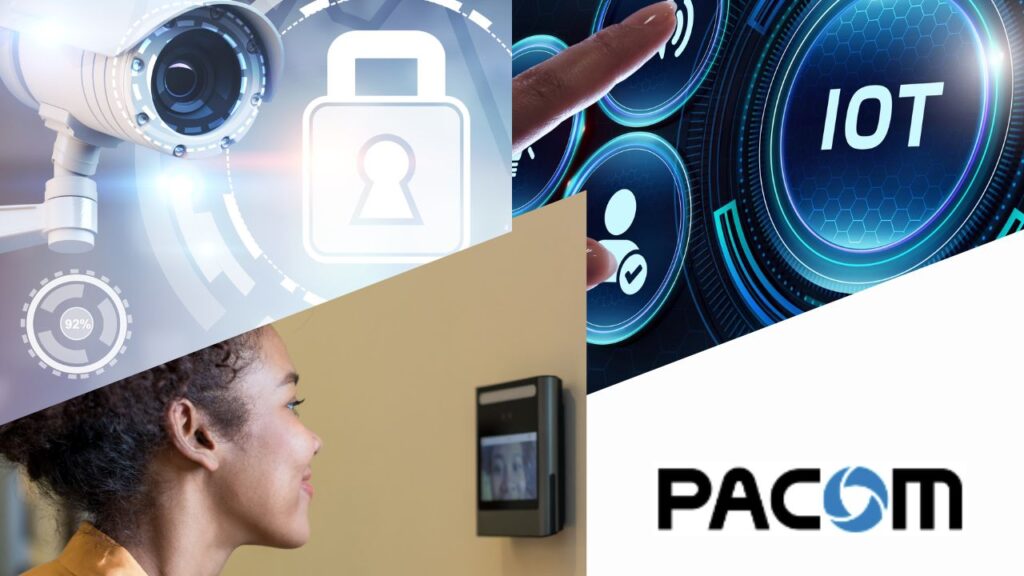 Access control technology now offers far more than just a way to restrict building entry and exit. Brad McMullen, PACOM’s general manager of security products and solutions, explains how it can integrate a variety of building services over one platform, as well as gather data that provides valuable operational intelligence.
Access control technology now offers far more than just a way to restrict building entry and exit. Brad McMullen, PACOM’s general manager of security products and solutions, explains how it can integrate a variety of building services over one platform, as well as gather data that provides valuable operational intelligence.
The past few years have brought about significant changes and challenges in the workplace, forcing organisations to re-evaluate their approach to building services infrastructure. In this era of rapid technological advancements, access control technology has emerged as a key player in the development of intelligent, connected and secure buildings.
Defining moment
An increasing amount of the true value of a building lies in the intelligence embedded in the fabric of its infrastructure. The Chartered Institution of Building Services Engineers (CIBSE) states that ‘intelligent buildings help building owners, property managers and occupants realise their goals in the areas of costs, lifetime energy management, wellbeing, convenience, safety, long-term flexibility and marketability, to achieve buildings which have high social, environmental and economic values’.
Access control technology is creating intelligent buildings that meet CIBSE’s definition due to its ability to seamlessly integrate with other building services including CCTV, energy management, lighting, lift management, digital signage and public address, water management, fire detection and life safety, as well as heating, ventilation and air conditioning (HVAC). This enables a building to respond intelligently to the needs of its occupants. For example, when an employee swipes their access card to enter a room, the system can automatically adjust the temperature and lighting to their preferred settings, enhancing both comfort and energy efficiency.
Making it possible
The internet of things (IoT) has made it possible for building services to be fully connected. At the heart of any IoT package are the sensors that collect data and transport it to the access control system. These sensors can monitor an array of parameters including temperature and humidity, as well as indoor air quality, zone by zone power usage, occupancy and space utilisation. The cloud is also having a huge impact on the functionality of access control systems, with fully customisable dashboards that can be accessed via any internet connected desktop PC or smartphone.
When it comes to security, correlating access events with corresponding video footage makes it possible to investigate incidents more effectively and identify any unauthorised access attempts or suspicious activities. In the event of a security incident, the combined data from access control and video surveillance systems can be used to reconstruct the sequence of events. This can help identify the individuals involved, understand their actions and assist with the implementation of appropriate actions to prevent similar incidents in the future.
Knowledge is power
Integrated cloud based access control solutions not only simplify the deployment of IoT networks, but also bring optimal connectivity between devices. By accessing, storing and processing data from smart IoT sensors it is possible for an access control system to deliver valuable business intelligence, operational insights and efficiencies via a single pane of glass.
With the need for all buildings to be as energy efficient as possible, the latest access control systems facilitate cost savings with regards to power usage, which is significant given that many organisations are operating a hybrid working policy. Keeping a building open with fewer occupants increases operational costs but an access control system can provide information to manage resources in a way that reflects the actual, not imagined, use of a building.
Room with a view
Energy use data can also highlight areas of excessive consumption and help make informed decisions. Additionally, data can also indicate instances of unnecessary energy usage, such as lighting and electrical equipment being on in rooms that are not in use, allowing a building manager to implement energy conservation measures.
Developing a comprehensive knowledge of a building and how it is used makes it possible to enhance operational effectiveness and increase employee productivity. Information around foot traffic can determine if a building’s layout is efficient and identify any issues, such as awkward room layouts, that may be contributing to over or underutilised spaces. This information can also be used to create an occupant room or desk booking system.
A step in the right direction
Access control technology’s ability to provide enhanced security, seamless integration, data driven insights, user convenience, energy efficiency, scalability and emergency response is reshaping the way buildings operate. As technology continues to advance, access control systems will continue to play a vital role in creating environments that benefit both occupants and building owners.
Embracing these innovations is not just a choice but a necessity for those looking to stay competitive in the evolving landscape of intelligent buildings.

